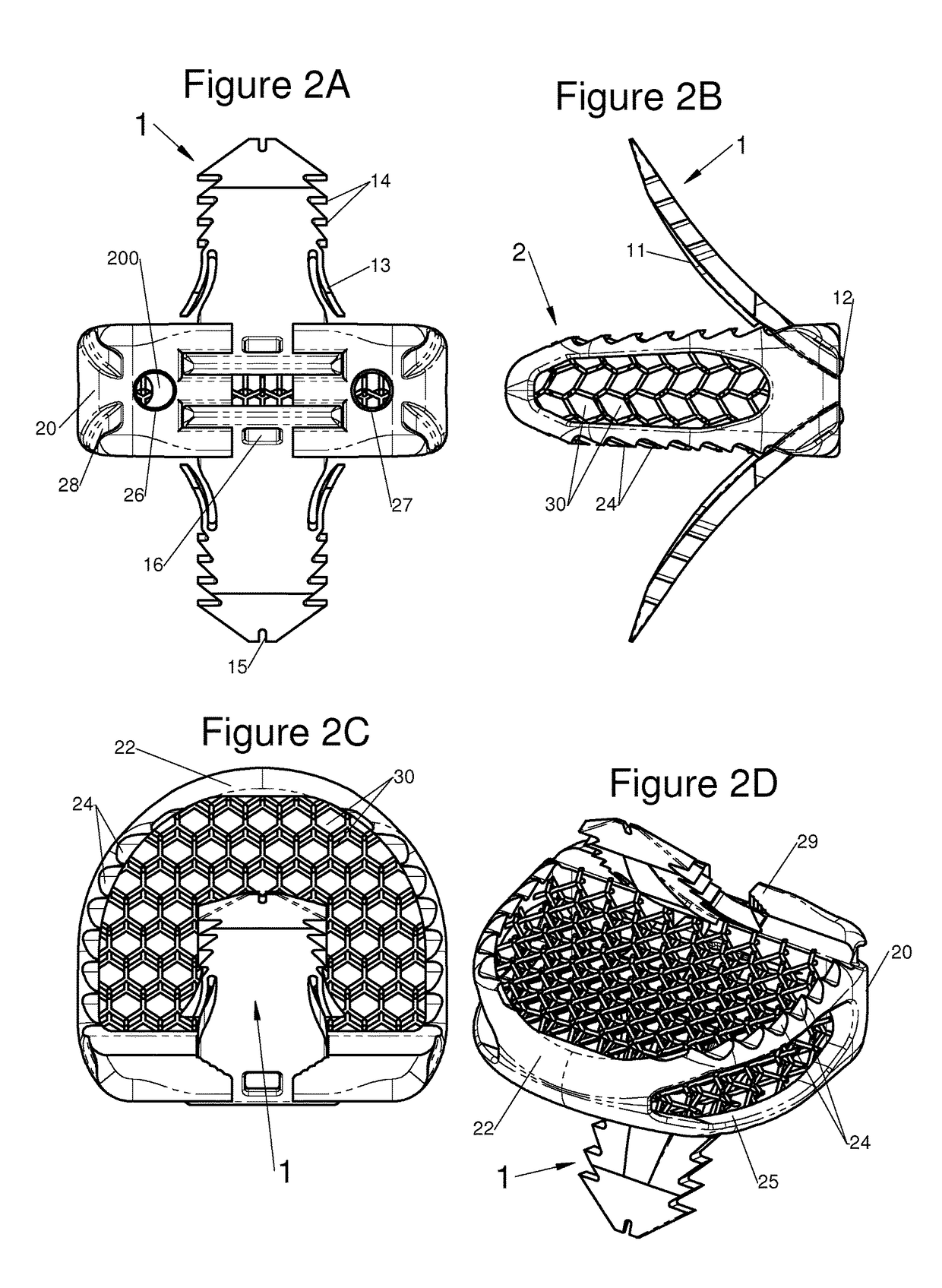Vertebral System, Implant and Inserts for Vertebral System
a technology of vertebral system and implant, applied in the field of orthopedic surgery, can solve the problems of inability to respond to the general problems of facility and/or speed, invasiveness of implants and surgical techniques, and inability to fix bone implants, etc., and achieve the effect of limiting costs and stocks, being reliable, fast and usabl
- Summary
- Abstract
- Description
- Claims
- Application Information
AI Technical Summary
Benefits of technology
Problems solved by technology
Method used
Image
Examples
Embodiment Construction
[0060]Various embodiments of the present invention relate to a vertebral implant (preferably intervertebral and in particular intersomatic, particularly for an arthrodesis of at least two adjacent vertebrae) and inserts for this implant, but preferably rather a system (e.g. a kit or an assembly) comprising at least one vertebral implant and a plurality of associated inserts (integrable into or associable with or assemblable with) this type of implant. Various embodiments of the present invention therefore relate to a system of vertebral implants and modular inserts comprising at least one bone implant, designed generally to be implanted between two bone structures or inside a cavity in a single bone structure. Various embodiments of the present invention are particularly suited for use in the spine and therefore relate in particular to a vertebral implant, designed for implantation in a vertebral segment composed of at least two vertebrae. This implant is intended to be customizable...
PUM
| Property | Measurement | Unit |
|---|---|---|
| speed | aaaaa | aaaaa |
| stability | aaaaa | aaaaa |
| size | aaaaa | aaaaa |
Abstract
Description
Claims
Application Information
 Login to View More
Login to View More - R&D
- Intellectual Property
- Life Sciences
- Materials
- Tech Scout
- Unparalleled Data Quality
- Higher Quality Content
- 60% Fewer Hallucinations
Browse by: Latest US Patents, China's latest patents, Technical Efficacy Thesaurus, Application Domain, Technology Topic, Popular Technical Reports.
© 2025 PatSnap. All rights reserved.Legal|Privacy policy|Modern Slavery Act Transparency Statement|Sitemap|About US| Contact US: help@patsnap.com



